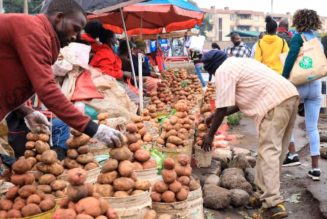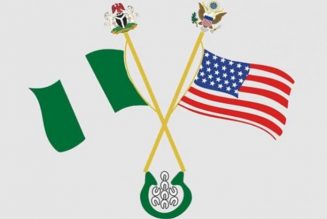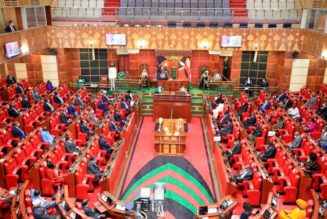Currencies
Kenya wins bid to lead Africa’s push to cut dollar dominance
Wednesday November 08 2023

Kenya has won the bid to host an electronic platform which will enable traders on the continent to settle deals in respective national currencies. PHOTO | SHUTTERSTOCK
Kenya has won the bid to host an electronic platform which will enable traders on the continent to settle deals in respective national currencies, placing it in the front line of a push by African countries to reduce reliance on the US dollar.
President William Ruto announced Tuesday that the pan-African payment and settlement system (Papss) will be domiciled in Kenya.
The payment platform will be adopted by African Union’s Assembly of Heads of State and Government next February, the President told a gathering in Nairobi.
The platform is projected to save the continent about Sh750 billion ($5 billion) in costs incurred by traders in converting respective national currencies into a third currency, largely the US dollar. These figures are based on estimates by Accra-based African Continental Free Trade Area (AfCFTA) secretariat.
“Kenya is a champion [of Africa’s integration] and we have been asked to host the headquarters of the pan-African payment system in Kenya,” Dr Ruto told participants at the launch of AfCFTA’s Trade and Development Centre at the Strathmore University.
Read: Kenyans hold Sh905bn in dollars as shortage bites
“Because we are leaders in the technology space and promoters of AfCFTA and any institution that supports the integration of our continent, we have gladly accepted to host the headquarters of pan-African payment system in Kenya.”
The Papss platform, developed African Export-Import Bank (Afreximbank) and backed by AU, enables a trader in a participating country to instruct her or his local bank to pay a supplier in a different country using the local currency.
Validation checks
The trader’s bank then sends instructions to Papss to settle the payment through the local bank of the supplier in the currency of their jurisdiction in real-time.
Papss is required to do validation checks before passing the instruction to the recipient bank.
AfCFTA secretary-general Wamkele Mene said the establishment of a single payment system and an integrated market was part of the founding instruments of the Organisation of African Unity in May 1963. The OAU was replaced by the AU in 2002.
“This is a very significant step forward in digital innovation to ensure that we deploy digital skills and tools for inclusive trade. This is a very important development in the history of our continent that resonates with the founding objectives of African unity. It is regrettable that it has taken that long,” Mr Mene said.
“The majority of beneficiaries of African payment and settlement system are small and medium enterprises and young entrepreneurs who cannot afford the costs with currency convertibility.”
Integrated payment
Traders in Africa and their local banks currently use correspondent banks, usually in the US and Europe, to complete payments between two African currencies largely in dollars, and sometimes the euro.
It takes about three to five days for the payment to get to the recipient’s bank, with charges at every stage.
The lack of an integrated payment and settlement infrastructure means an estimated 80 percent of intra-Africa trade deals go through the US and Europe to be completed.
Traders on the continent have since last year been hit by a shortage of the US currency amid a flight to safe havens by investors in the face of elevated global inflation and interest rates.
This has resulted in delays in settling deals with suppliers abroad and the depreciation of most currencies in Africa, igniting debate on the dominance of the US currency in intra-African trade.
The Kenya shilling has, for example, lost about 20 percent of its value against the greenback year-to-date.
Africa has multicurrency cross-border payment systems, serving regional trading blocs.
They include the Regional Payment and Settlement System (REPSS) of the Common Market for Eastern and Southern Africa (COMESA) bloc, which settles deals either in dollars or euros, and the East African Payment System (EAPS) which settles in local currencies of participating East African Community (EAC) countries.
Read: Dollar market distortion eases after President Ruto directive
“The dollar, being the global reserve currency, still dominates global trade even though its share of total trade has diminished over the last 20 years,” said Ken Gichinga, chief economist at Mentoria Economics.
“African countries should first establish a conducive business environment anchored on low-interest rates, low tax, and moderate regulation. This will greatly attract investment.”
The push to reduce the dominance of the dollar in global trade is, however, not new.
In the 1990s, analysts projected that the Japanese yen would threaten the dollar as the global reserve currency and this was reignited in the 2000s following the launch of the euro. Recently, there have been arguments that the Chinese currency, Renminbi would challenge the dollar’s status in global trade.
“While global fracturing [aligning either with the US or China] will fundamentally reshape the global economic and financial landscape over the coming decade, the consequences for the dollar are likely to be less dramatic than many now argue,” Neil Shearing, chief economist for UK-based Capital Economics, wrote in a note on May 2.
“[One of the reasons is] while much of the debate has focused on the dollar’s status as the world’s preeminent reserve currency, its financial and geopolitical influence stems principally from the dominant use of the dollar (and by extension the US financial system) in cross-border transactions.”









